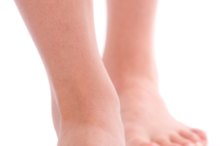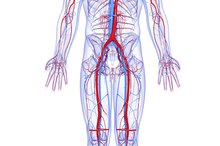Common Venipuncture Sites
Venipuncture is a procedure involving the puncture of a vein for the purposes of collecting blood or administering intravenous (IV) therapy and IV drugs 1. A phlebotomist or other health care provider will apply a tourniquet above the intended area of the venipuncture. When the veins become engorged for easier visualization, the health care provider will select the best site, prior to entering the needle for collecting a specimen, or subsequently inserting an IV catheter to establish a line. The arms, hands and, in rare cases, the feet can provide access for venipuncture 1.
If you are experiencing serious medical symptoms, seek emergency treatment immediately.
Median Cubital Vein
The most commonly used site for a venipuncture is at the bend of the elbow, also called the antecubital fossa 1. Several veins in the antecubital fossa provide excellent access. The median cubital vein, a superficial vein that forms a connection point between the cephalic and basilic veins of the arm is large, and therefore easier to see and feel. Risks associated with using this vein include penetration of the biceps tendon and the brachial artery. These tissues lie just below the median cubital vein so care must be taken not to puncture too deeply.
- The most commonly used site for a venipuncture is at the bend of the elbow, also called the antecubital fossa 1.
- Several veins in the antecubital fossa provide excellent access.
Cephalic Vein
Veins Used in Phlebotomy
Learn More
The cephalic vein runs superficially under the skin along the outer side of the upper and lower arm, eventually dipping under the shoulder to join the axillary vein in the armpit. This is another acceptable venipuncture site if scarring is present in the antecubital space from previous venipunctures or if the antecubital veins are not palpable. The cephalic vein is more commonly accessed on the forearm rather than the upper arm. You can also access the cephalic sign in the inside of the wrist as it runs down to the thumb.
- The cephalic vein runs superficially under the skin along the outer side of the upper and lower arm, eventually dipping under the shoulder to join the axillary vein in the armpit.
- This is another acceptable venipuncture site if scarring is present in the antecubital space from previous venipunctures or if the antecubital veins are not palpable.
Basilic Vein
The basilic vein, another main superficial vein of the arm, runs along the inner side of the upper arm and forearm. The basilic vein is also commonly used for a venipuncture in the forearm rather than the upper arm 1. This is because halfway up the upper arm, the vein turns inwards to become a deep vein. Deep veins run along arteries and present a risk for puncture to the artery.
- The basilic vein, another main superficial vein of the arm, runs along the inner side of the upper arm and forearm.
- This is because halfway up the upper arm, the vein turns inwards to become a deep vein.
Dorsal Metacarpal Veins
Types of IV Catheters
Learn More
The veins that run down the middle of the hand, called dorsal metacarpal veins, can also be used for intravenous infusions as well as for drawing blood if the antecubital vein isn't accessible. Hand veins aren't as large as the veins in the forearm and antecubital fossa. In some hospitals, it's policy to start with the veins on the hand as a first choice for an intravenous line and work your way up if you can't access a lower vein.
Related Articles
References
- BD Diagnostics: Best Sites for Venipuncture
- "Fundamentals of Nursing"; P. Potter & A. Perry; 2005
- "How the Body Works"; Dr. Peter Abrahams; 2007
Writer Bio
Based in Chicago, Jojo Genden is passionate about sharing her health and wellness expertise through writing since 2008. She holds a Bachelor of Science in biology from Rockford College, and a Bachelor of Science in nursing from Edinboro University of Pennsylvania. Genden is a registered nurse in the state of Illinois with a background in intensive care.








